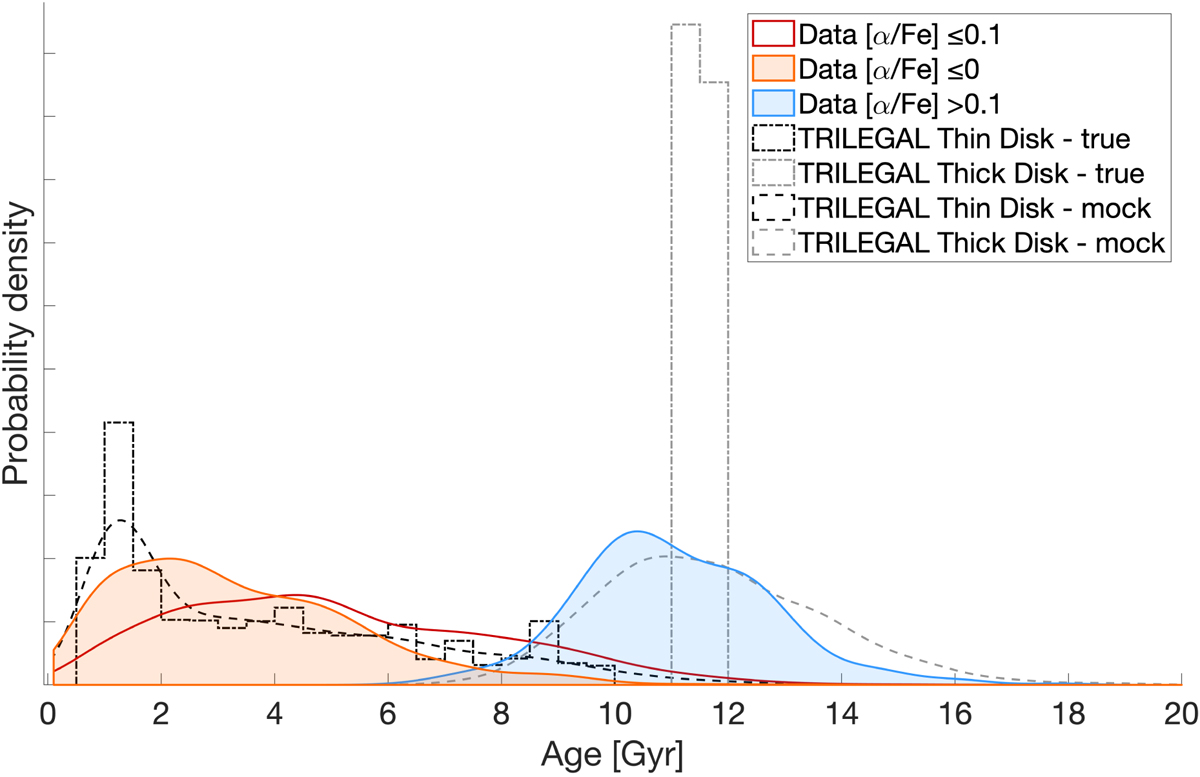Fig. 13.

Comparison between a reference TRILEGAL simulation, after a target selection similar to Kepler’s has been applied (see Miglio et al. 2014), and ages estimated from observations. For the thick disc in the simulations we assume an age between 11 and 12 Gyr, while a uniform star formation history is assumed for the thin disc for the last 10 Gyr (dot-dashed lines). Ages are then perturbed assuming a 0.08 dex random uncertainty to reflect the current uncertainties in age (dashed lines). The observed sample is divided into a high-α population ([α/Fe] > 0.1, blue line and shaded area) and a low-α population defined using two thresholds: [α/Fe] ≤ 0 (orange line and shaded area) and [α/Fe] ≤ 0.1 (red line).
Current usage metrics show cumulative count of Article Views (full-text article views including HTML views, PDF and ePub downloads, according to the available data) and Abstracts Views on Vision4Press platform.
Data correspond to usage on the plateform after 2015. The current usage metrics is available 48-96 hours after online publication and is updated daily on week days.
Initial download of the metrics may take a while.


